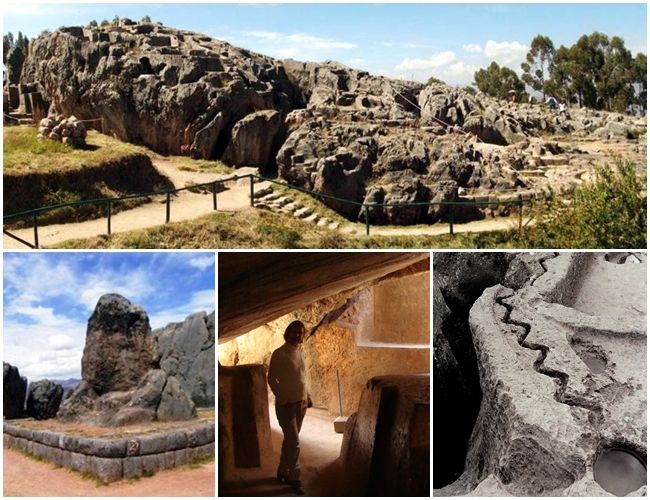It is located about 4 km (15 minutes) northeast of the city of Cusco along an asphalt road. This place of worship is located in what is now known as Cerro Socorro and has an area of 3,500 square meters.
To get to Qenqo in Cusco Perú you can take a City Tour from any travel agency (almost all of them offer this type of service); on foot, it takes 50 minutes from the center of the city of Cusco; in this case you can do it initially using the route to Sacsayhuaman.
Qenqo Ruins
The ensembles that we describe were, without a doubt, very important sanctuaries for the Incas. Despite the destruction that this complex suffered during the colony, what can be seen today within it is still impressive and colossal.
The Hall of Sacrifices


Underground chamber, made in the internal part, low portion of the great rock, in such a way that floors, ceiling, walls, tables and cupboards are carved out of a single gigantic rock. It is said that this underground chamber could have been used llama sacrifices.
Intiwatana and Astronomical Observatory
Located in the upper part of the great rocky rock, in Cusco, made up of two cylindrical prominences that stand vertically on a quasi-elliptical pedestal, all in situ carved into the upper part of the rock. The use of the Intiwatanas (where the sun is tied) during the Inca Empire is so far an enigma.
It is presumed that it was a kind of astronomical observatory, which the hamautás used to measure time, to establish the seasons, determine the solstices and equinoxes, and also, as an Adoratory where the Sun, the Moon, Venus and the stars.
The Zigzagging Gutter
It is on the large rock and very close to the Intiwatana. The zigzagging channel starts from a small hole and moves downward in an inclined plane and broken line, which then forks.
One of these branches conducts the liquid to the underground chamber or Sacrifice Room (according to the Cusco historian Víctor Angles). The liquid could be consecrated chicha or blood of beings sacrificed to the gods.
The amphitheater
It is a huge semicircular area of 55 m. long, with 19 incomplete niches, distributed along the wall. During the Inca Empire this place was a temple for public ceremonies. In front of the free area, there is a large stone block of 6 m. high that rests on a solid rectangular pedestal.
It has niches distributed around the amphitheater as seats, but according to recent research, it is very likely that in reality they have been the bases of a great wall, located in each of them, the representation of an entity to which they worshiped.
How to get to Qenqo in Cusco Perú?
From the main square by bus it takes about 15 minutes to get to Qenqo in Cusco Perú. You can hire a City Tour or a private service. On foot it takes approximately 50 minutes. The entrance to Qenqo ruins is with the Tourist Ticket of Cusco.
The best option to get to Qenqo is a tour in Cusco, like the 3 Days Cusco Tour or the 5 Days Cusco Tour.










